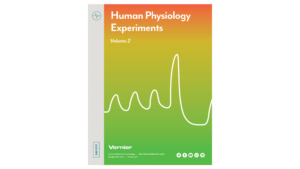Introduction
Constant pressure is required to pump blood through the circulatory system, which ensures the delivery of oxygen and nutrients to tissues, as well as the removal of carbon dioxide and waste products. Positive pressure is created by forceful contraction of the left ventricle of the heart, measured as systole. It is maintained during relaxation of the ventricle by closure of the aortic valve and recoil of arteries, measured as diastole.
Mean arterial pressure (MAP) is a useful measure of the adequacy of tissue perfusion. It is not a simple average of systolic and diastolic blood pressures because diastole continues for twice as long as systole. Therefore, MAP can be reasonably approximated using the equation
Mean arterial pressure is related to both cardiac output and total peripheral resistance, where
- Cardiac output is the amount of blood pumped out of the heart with each beat (called the stroke volume) multiplied by the number of beats per minute.
- Total peripheral resistance depends on blood viscosity, length of the arterial system, diameter and elasticity of the blood vessels, and the pressure entering versus leaving the arterial system (systolic pressure minus the pressure in the venous system).
In this experiment, you will compare blood pressure readings taken before and after exercise and measure changes in systolic, diastolic, and mean arterial pressures. You will also consider the effect that exercise has on cardiac output and peripheral vascular resistance. Important: The equipment used in this experiment is for educational purposes only and should not be used to diagnose medical conditions.
Objectives
- Obtain graphical representation of blood pressure.
- Compare changes in systolic, diastolic, and mean arterial pressures with exercise.
- Use blood pressure readings and pulse to infer changes in cardiac output and peripheral vascular resistance with exercise.
Sensors and Equipment
This experiment features the following sensors and equipment. Additional equipment may be required.
Correlations
Teaching to an educational standard? This experiment supports the standards below.
- International Baccalaureate (IB)/Sports, Exercise, and Health Science
- 2.2 Structure and function of the cardiovascular system
- International Baccalaureate (IB) 2025/Biology
- D3.3.11—Changes in blood supply to organs in response to changes in activity
Ready to Experiment?
Ask an Expert
Get answers to your questions about how to teach this experiment with our support team.
- Call toll-free: 888-837-6437
- Chat with Us
- Email support@vernier.com
Purchase the Lab Book
This experiment is #2 of Human Physiology Experiments: Volume 2. The experiment in the book includes student instructions as well as instructor information for set up, helpful hints, and sample graphs and data.


